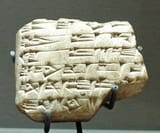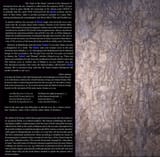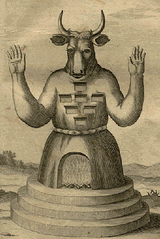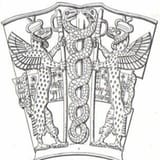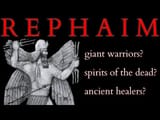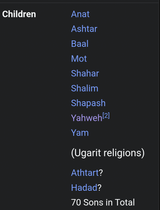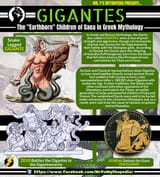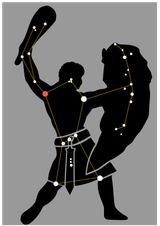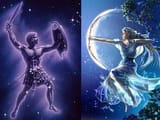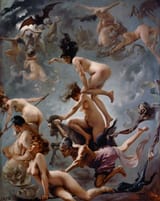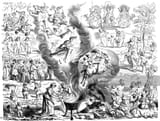So Elohim is the father of Yahwe? And he had other children like Baal and Moloch
>>17799674 (OP)
Elohim means gods. It is not the name of a god, but a majestic plural, like YHWH Elohim (YHWH of the Gods, in this case referring to the Angels). The scholarly consensus is that Yahweh was originally a Midianite (Arabic) version of the Edomite national god Qos and was syncretized with Baal-Hadad (who was the son of Dagon) and then El in Canaan. However, the first mentions of Yahweh appear in theophoric names found in Mesopotamia from the end of the Third Dynasty of Ur and the beginning of the Amorite period, around the 21st-20th century BCE, in city-states such as Kisurra, Sippar and Mari, in the Mesopotamian region.
>Chronological inscriptional evidence of Yahu/Yahweh
>21st-20th c. BCE
>Yahwi-ili ("ia-ah-wi-dingir", in Early Old Babylonian Akkadian), Theophoric, FAOS 02, 007 (P509559), FAOS 02, 004 (P509556), FAOS 02, 006 (P509558) Kisurra (Adu-Hatab), Iraq. MHET 2/1, 055 (P481312) / Provenance Sippar-Yahrurum (Tell Abu Habbah), Iraq. de Boer diss. p. 436-437 (P413247) / Provenance unknown (British Museum)
>20th-17th c. BCE
>Yahu- (partial, "ia-hu-", in Old Babylonian Akkadian), YOS 02, 146 (P308005) / Provenance = Larsa (Tell as-Senkereh), Iraq
>Yah- (partial, "ia-ah-" in Old Babylonian Akkadian), JCSSS 2, 01 (P480459)/Provenance unknown (British Museum). FM 06, 040 (P479759) / Provenance = Mari (Tell Hariri), Syria
>Yahwi-Ashur (ia-ah-wi-a-szar, in Old Babylonian Akkadian), Theophoric, FM 06, 036 (P479756), FM 06, 036 (P479756), FM 06, 035 (P479755), FM 06, 040 (P479759), ARM 21, 056 (P352058)/ Provenance Mari (Tell Hariri), Syria
>14th c. BCE
>yhw3 ("i-h-w3-3",), Block II 69, Soleb IV, Temple of Amun-Ra, Soleb, Sudan
>13th c. BCE
>yhw3 ("i-h-w3-3",), Sector IV, Hypostyle Hall, Column IV N4 a2, Temple of Amun, Amara West, Sudan
>ca. 840 BCE
>Yahweh ("yhwh", in Moabite), Mesha Stele, Dhiban, Jordan
>9th-8th c. BCE
>yw, I'benyaw inscription (jug), Found at Tel Abel Beth Maacah, Galilee, Israel
Elohim means gods. It is not the name of a god, but a majestic plural, like YHWH Elohim (YHWH of the Gods, in this case referring to the Angels). The scholarly consensus is that Yahweh was originally a Midianite (Arabic) version of the Edomite national god Qos and was syncretized with Baal-Hadad (who was the son of Dagon) and then El in Canaan. However, the first mentions of Yahweh appear in theophoric names found in Mesopotamia from the end of the Third Dynasty of Ur and the beginning of the Amorite period, around the 21st-20th century BCE, in city-states such as Kisurra, Sippar and Mari, in the Mesopotamian region.
>Chronological inscriptional evidence of Yahu/Yahweh
>21st-20th c. BCE
>Yahwi-ili ("ia-ah-wi-dingir", in Early Old Babylonian Akkadian), Theophoric, FAOS 02, 007 (P509559), FAOS 02, 004 (P509556), FAOS 02, 006 (P509558) Kisurra (Adu-Hatab), Iraq. MHET 2/1, 055 (P481312) / Provenance Sippar-Yahrurum (Tell Abu Habbah), Iraq. de Boer diss. p. 436-437 (P413247) / Provenance unknown (British Museum)
>20th-17th c. BCE
>Yahu- (partial, "ia-hu-", in Old Babylonian Akkadian), YOS 02, 146 (P308005) / Provenance = Larsa (Tell as-Senkereh), Iraq
>Yah- (partial, "ia-ah-" in Old Babylonian Akkadian), JCSSS 2, 01 (P480459)/Provenance unknown (British Museum). FM 06, 040 (P479759) / Provenance = Mari (Tell Hariri), Syria
>Yahwi-Ashur (ia-ah-wi-a-szar, in Old Babylonian Akkadian), Theophoric, FM 06, 036 (P479756), FM 06, 036 (P479756), FM 06, 035 (P479755), FM 06, 040 (P479759), ARM 21, 056 (P352058)/ Provenance Mari (Tell Hariri), Syria
>14th c. BCE
>yhw3 ("i-h-w3-3",), Block II 69, Soleb IV, Temple of Amun-Ra, Soleb, Sudan
>13th c. BCE
>yhw3 ("i-h-w3-3",), Sector IV, Hypostyle Hall, Column IV N4 a2, Temple of Amun, Amara West, Sudan
>ca. 840 BCE
>Yahweh ("yhwh", in Moabite), Mesha Stele, Dhiban, Jordan
>9th-8th c. BCE
>yw, I'benyaw inscription (jug), Found at Tel Abel Beth Maacah, Galilee, Israel


